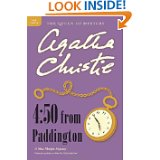 First Impressions
First Impressions
There is another aspect of character building that’s important to keep in mind; first impressions. A reader wants a rough sketch of major characters when they appear on the page so he can classify them in his imagination. But something else must happen in these first meetings. In your story opening, the opening scenes and inciting incident will always portray at least one character under stress. Because there are so many ways of beginning a story, this doesn’t necessarily mean that your protagonist will be under stress, but it’s usually a major character in the story. When a reader first encounters a character under pressure, he begins building sympathy for the fictional person and then over time, this sympathy becomes empathy and involvement.
A terrific example of this technique can be found in Agatha Christie’s What Mrs. McGillicuddy Saw! She evokes sympathy for her character in the first paragraph: Mrs. McGillicuddy panted along the platform in the wake of the porter carrying her suitcase. Mrs. McGillicuddy was short and stout, the porter was tall and free-striding. In addition, Mrs. McGillicuddy was burdened with a large quantity of parcels; the result of a day’s Christmas shopping. The race was, therefore an uneven one, and the porter turned the corner at the end of the platform while Mrs. McGillicuddy was still coming up the straight.
Notice how we’re immediately sympathizing with the character, especially after we read panting, because as we all know, when we’re panting, we’re often in difficulty. We then learn that the train station is especially crowded and “Mrs. McGillicuddy and her parcels were buffeted to and fro.” Again, most of us have experienced a crowded train station or airport and know the difficulty of navigating while carrying a lot of packages. Christie then adds a raucous announcement of a train leaving and readers understand that the station is a cacophony, an onslaught to the nerves. Added to this, we all know how tired a person can be after a day of Christmas shopping.
Next, we discover that her bored-looking porter mistakenly leads her to a third class carriage when she’s paid for a first class ticket and when she tips him, his miffed expression of disappointment indicates that the tip is better suited for a person traveling third class. She settles into the plush cushions and opens a magazine and the train leaves the station. Within three minutes Mrs. McGillicuddy is asleep and wakes refreshed. She looks around the carriage, pleased with her purchases. By this time, the reader is also experiencing empathy with her because we also know what it’s like to take stock after a successful shopping trip.
Then, events on the train turn distressingly interesting. This happens when her train slows down and at the same time a train traveling in the same direction slows also. At the moment when the two trains gave the illusion of being stationary, a blind in one of the carriages flew up with a snap. Mrs. McGillicuddy looked into the lighted carriage that was only a few feet away.
Then she drew her breath in with a gasp and half rose to her feet.
Standing with his back to the window and to her was a man. His hands were round the throat of a woman who faced him, and he was slowly, remorselessly, strangling her. Her eyes were starting from their sockets, her face was purple and congested. As Mrs. McGillicuddy watched, fascinated, the end came, the body went limp and crumpled in the man’s hands.
Next, the train sped away and she tries to explain what she has witnessed to the ticket collector. He doesn’t believe her, and although he remains polite, suggests she had been dreaming. Then, adding to her growing distress at not being believed, his eyes drop to her magazine with a garish cover depicting a woman being strangled. Again, readers all know what it’s like not to be believed or to be considered foolish or imaginative. By the time Mrs. McGillicuddy arrives in St. Mary Mead at Jane Marple’s home, we’re thoroughly in sympathy with her and wondering who was murdered and why.






Leave a Reply